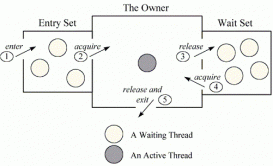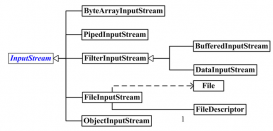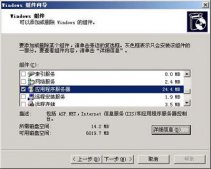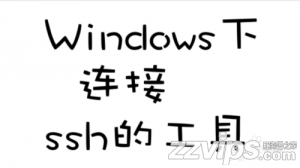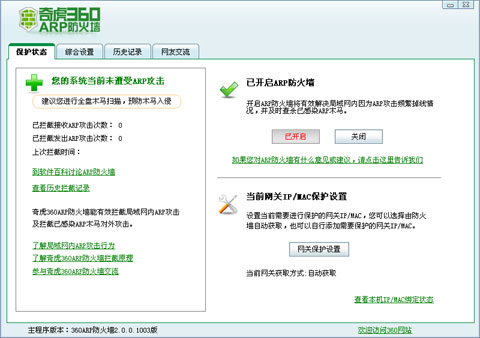线程的常用操作
设置线程名字:setName()
获取线程名称:getName()
线程唯一Id:getId()
|
1
2
3
4
5
6
7
8
9
|
// 自定义线程名称String threadName = "threadName";// 构造方法方式Thread thread = new Thread(() -> { System.out.println("线程名=" + Thread.currentThread().getName());},threadName);// set方法方式// thread.setName(threadName);System.out.println("线程唯一Id=" + thread.getId()); |
线程启动:start()
判断线程是否存活:isAlive()
|
1
2
3
|
// 线程启动thread.start();System.out.println("是否为存活线程=" + thread.isAlive()); |
线程方法:run() /call()
线程启动后会去调用的方法。线程要做什么就在run/call方法写,不需要直接调用,线程启动后自己会去调用run() /call()。如果程序没有启动线程直接调用run/call,那么就不属于多线程编程,是属于当前线程直接调用普通方法一样。
获取当前线程对象:currentThread()
操作当前线程的非static方法,得先拿到线程对象才可以
|
1
2
3
4
5
6
7
8
9
10
|
// 获取当前线程对象Thread currentThread = Thread.currentThread();// 对当前线程做一些操作System.out.println(currentThread.getName());try { // sleep 静态方法则不需要 Thread.sleep(1000);} catch (InterruptedException e) { e.printStackTrace();} |
关于线程的状态控制(生命周期)的操作可以参考上一篇文章。
守护线程(后台线程)
普通线程(用户线程)的守护者,守护线程的任务是为其他的线程提供服务。如果进程中没有了用户线程,那么守护线程也就没有存在的意义,JVM也随之结束。典型的守护线程有JVM的垃圾回收线程,操作系统的启动也会启动各种模块的守护线程。
设置线程为守护线程:setDaeman()
注意:该方法必须在start() 方法之前调用
|
1
2
3
4
5
6
7
8
9
10
11
12
13
14
15
16
17
|
public static void main(String[] args) { Thread thread = new Thread(() -> { System.out.println("线程名="+Thread.currentThread().getName()); try { Thread.sleep(1000); } catch (InterruptedException e) { e.printStackTrace(); } // 这一句不会打印出来,因为main线程(目前唯一的普通线程)等待1秒后已经结束了 System.out.println("守护线程的状态=" + Thread.currentThread().getState()); }); // 守护线程 thread.setDaemon(true); // 线程启动 thread.start(); System.out.println("是否为守护线程=" + thread.isDaemon());} |
线程串行化
执行join() 方法的线程进入等待唤醒状态(WAITING),直到调用该方法的线程结束后再由等待唤醒状态转为可运行状态(RUNNABLE)。join() 方法是Thread类中的方法,其底层是使用wait() 方法来实现线程等待,待线程isAlive()为false 时才
实现线程的串行化:一个线程调用另一个线程对象的join() 来实现线程串行化执行。
举个例子:一道好菜
|
1
2
3
4
5
6
7
8
9
10
11
12
13
14
15
16
17
18
19
20
21
22
23
24
25
26
27
28
29
30
31
32
33
34
35
36
37
38
39
40
41
42
43
44
45
46
47
|
public class DemoCooking { public static void main(String[] args) { Thread mainThread = Thread.currentThread(); // 1.买菜 Thread buyThread = new Thread(new CookingThread(mainThread,"买菜"),"buyThread"); // 2.洗菜 Thread washThread = new Thread(new CookingThread(buyThread,"洗菜"),"washThread"); // 3.切菜 Thread cutThread = new Thread(new CookingThread(washThread,"切菜"),"cutThread"); // 4.炒菜 Thread scrambleThread = new Thread(new CookingThread(cutThread,"炒菜"),"scrambleThread"); // 不受线程启动顺序的影响 scrambleThread.start(); washThread.start(); cutThread.start(); buyThread.start(); // main线程先执行完才可以开始:买菜 System.out.println("开始准备……"); } public static class CookingThread implements Runnable{ private final Thread thread; private final String job; public CookingThread(Thread thread, String job){ this.thread = thread; this.job = job; } @Override public void run() { String name = Thread.currentThread().getName()+":"; try { thread.join(); System.out.println(name + job + "开始"); Thread.sleep(1000); System.out.println(name + job + "结束"); Thread.sleep(1000); // 偷懒下 } catch (InterruptedException e) { e.printStackTrace(); } } }} |
执行结果:main > buyThread > washThread > cutThread > scrambleThread > 结束
开始准备……
buyThread:买菜开始
buyThread:买菜结束
washThread:洗菜开始
washThread:洗菜结束
cutThread:切菜开始
cutThread:切菜结束
scrambleThread:炒菜开始
scrambleThread:炒菜结束
线程优先级
设置当前线程的优先级,线程优先级越高,线程可能获得执行的次数越多,Java线程的优先级用整数表示,优先级的范围为1-10,默认为5。
setPriority(int)方法:设置线程的优先级。
getPriority方法:获取线程的优先级。
|
1
2
3
4
5
6
7
8
9
10
11
12
13
14
15
16
|
public static void main(String[] args) { Thread thread = new Thread(() -> { System.out.println("线程1"); }); thread.setPriority(10); Thread thread1 = new Thread(() -> { System.out.println("线程2"); }); thread1.setPriority(1); thread.start(); thread1.start(); System.out.println("线程默认的优先级为=" + Thread.currentThread().getPriority());} |
线程中断
使用interrupt() 方法设置线程中断标志=true,让线程受到“阻塞”时抛出一个中断信号。如果线程处于阻塞、等待唤醒或超时等待状态(Object.wait, Thread.join和Thread.sleep)时,那么它将接收到一个中断异常(InterruptedException),从而提前被结束该状态。反之,如果线程是处于“可运行”(RUNNABLE)状态,那么中断标志将没有作用。
案例一:线程中断有效
|
1
2
3
4
5
6
7
8
9
10
11
12
13
14
15
16
17
18
19
20
|
public static void main(String[] args) { Thread thread = new Thread(() -> { System.out.println("线程1"); try { // 闹钟1分钟后响 Thread.sleep(60000); System.out.println("闹钟响了"); } catch (InterruptedException e) { // 提前退出超时等待状态 System.out.println("发生异常,提前醒了,闹钟没响手动关了"); } System.out.println("继续执行该线程的后续程序……"); }); thread.setPriority(1); thread.start(); thread.interrupt(); System.out.println("main线程将thread 终端状态设置为 "+thread.isInterrupted());} |
执行结果:
main线程将thread 终端状态设置为 true
线程1
发生异常,提前醒了,闹钟没响手动关了
继续执行该线程的后续程序……
案例二:线程中断无效
|
1
2
3
4
5
6
7
8
9
10
|
public static void main(String[] args) { Thread thread1 = new Thread(() -> { System.out.println("线程" + Thread.currentThread().getName()); while (true) { System.out.print(Thread.currentThread().getState() + "\t"); } }); thread1.start(); thread1.interrupt();} |
执行结果:线程一直打印自己的状态为RUNNABLE。
以上就是详解Java线程中常用操作的详细内容,更多关于Java线程操作的资料请关注服务器之家其它相关文章!
原文链接:https://mp.weixin.qq.com/s/yjQTUbBTrNiudUJtmf_mZA


